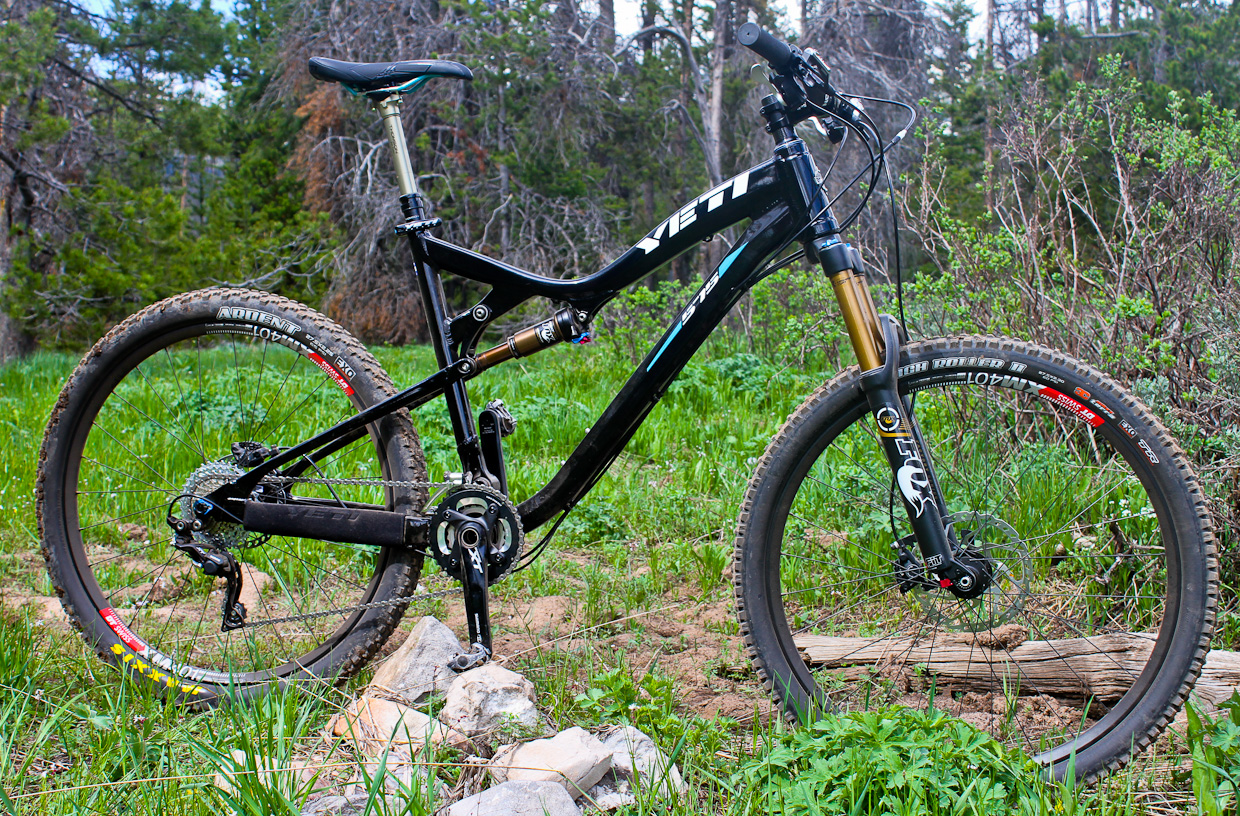
The Yeti 575 first appeared on the bike scene in 2004. Boasting just under six inches of travel, it had significantly more suspension than the average cross-country bike, and was a progressive bike for the time. The frame of the 575 has not changed too much over the ten years since its introduction, but was altered this year to accommodate 27.5 wheels to keep up with the latest fashion trends (and you know, function). By today's standards, a bike with a 67 degree headtube angle and a hair under six inches of travel lands you in the long-legged trail bike category. While the 575 was an all-mountain bike before all-mountain bikes were a thing, that category is now rocking headtube angles closer to those of a downhill bike (around 65 degrees) to give a more slacked-out feeling for stability on the descents.
 The 575's rear suspension is a simple single-pivot design suspended by a Fox Float CTD shock in Yeti's Race build. Photo by Ryan Dunfee.
The 575's rear suspension is a simple single-pivot design suspended by a Fox Float CTD shock in Yeti's Race build. Photo by Ryan Dunfee.
Let’s discuss the rear suspension a little. The Yeti has a low leverage ratio at the beginning of its travel, which means the 575 will not bob much when climbing or pedaling. Then, the ratio increases to provide a soft and supple middle range for smaller hits like roots, small rocks, and braking bumps. The ratio then decreases again to prevent bottoming out and blowing through the travel on bigger jumps, drops, and hits.
A problem I found with this design, and I have heard was worse in previous models, is that you blow through the mid-range of the travel quickly and find yourself fighting the stiff bottom-out resistance at the end of the travel, even on small to medium hits. However, Yeti said this was addressed better in the 2014 650b design, which is exciting.
My regular trail bike is a Devinci Dixon, a bike noted for its rigidity and tailored towards aggressive trail riders, and I found myself wanting to get back on it to avoid the chatter I experienced on the 575. I found that my arms were tingling as they did when I rode my Merlin hardtail back in the day, despite setting the 575’s shocks to the recommended 20% sag.
The Build
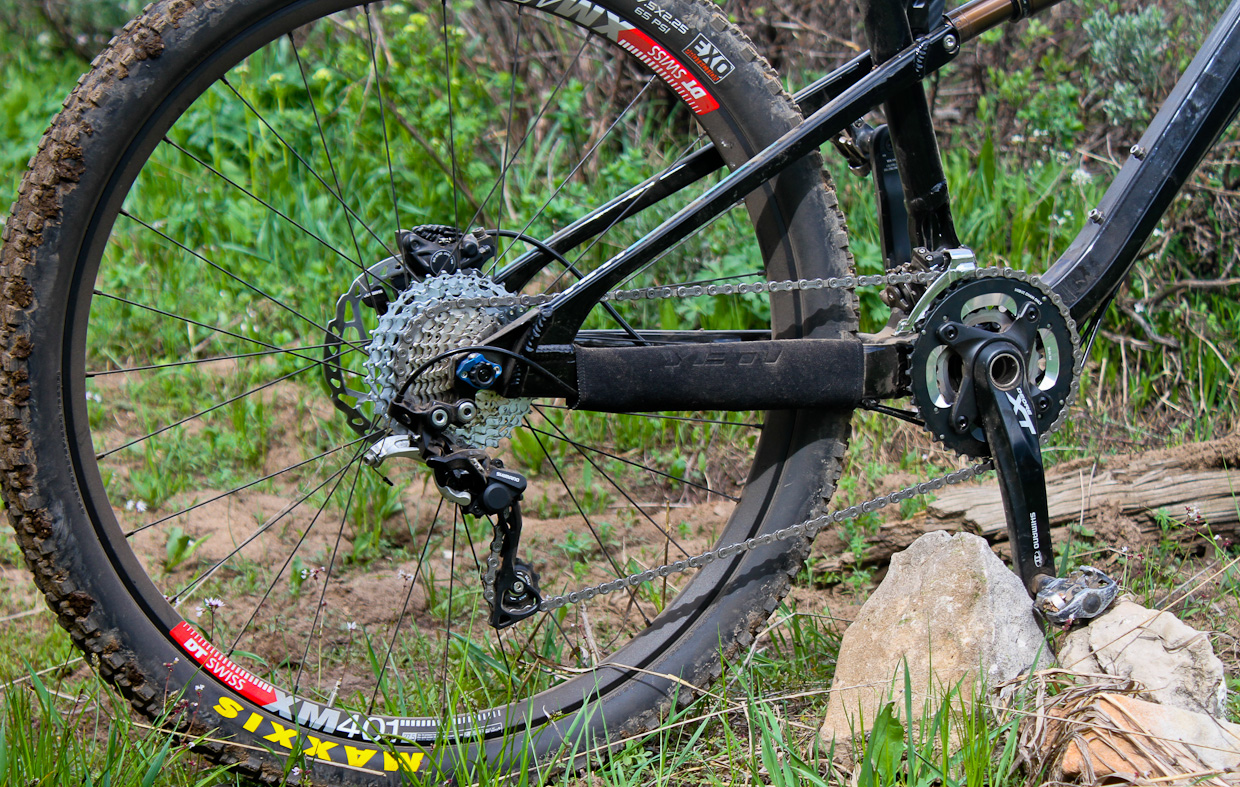 XT drivetrains, like the one on the 575's Race build, get you 99% of the performance of an XTR kit with only a small increase in weight. Ryan Dunfee photo.
XT drivetrains, like the one on the 575's Race build, get you 99% of the performance of an XTR kit with only a small increase in weight. Ryan Dunfee photo.
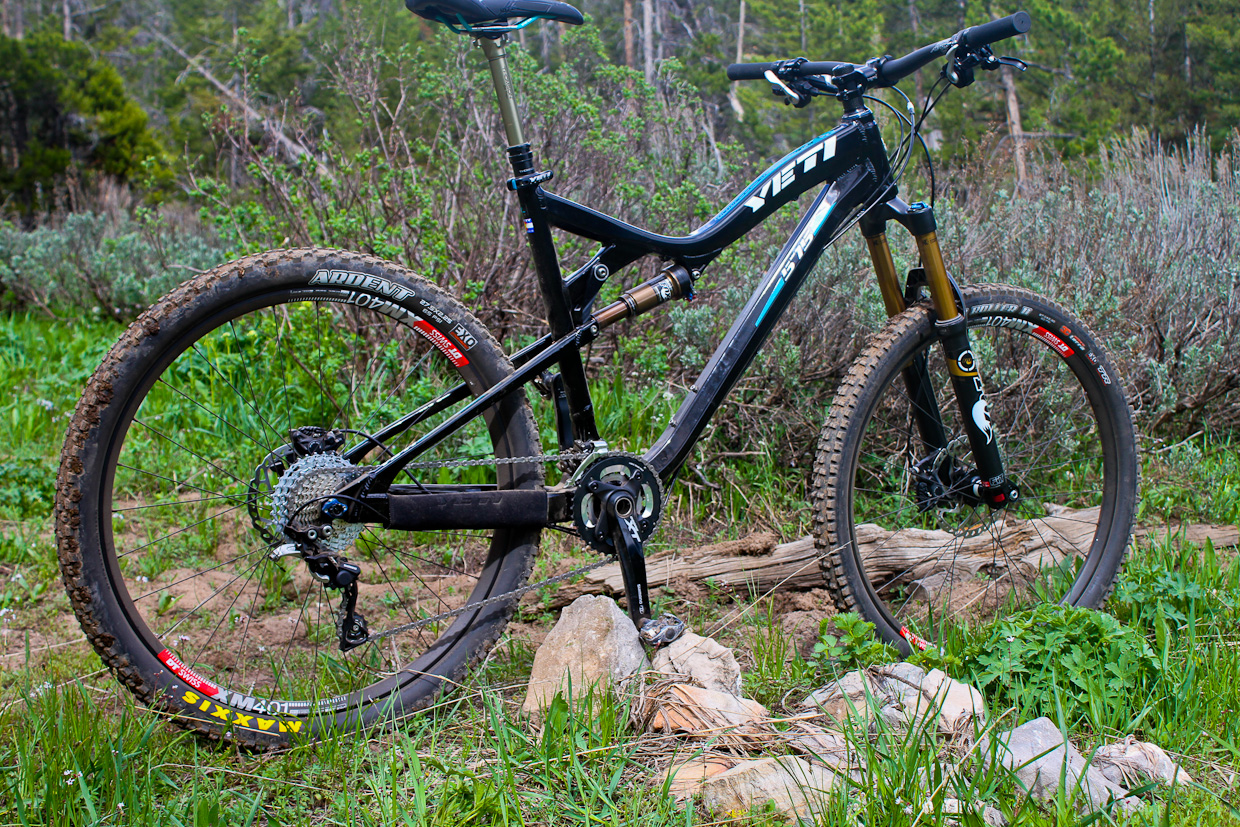 An XT drivetrain, Kashima-coated Fox suspension, Thompson bits, and a Thompson Elite dropper post round out the highlights of the Yeti. Ryan Dunfee photo.
An XT drivetrain, Kashima-coated Fox suspension, Thompson bits, and a Thompson Elite dropper post round out the highlights of the Yeti. Ryan Dunfee photo.
I was very happy with the build on the Yeti 575 Race. I felt right at home with XT components and the balls-saving Thomson Elite dropper post. The 80mm stem on the large frame in conjunction with the low, 20 mm rise and 750 mm wide Easton Carbon bars made the cockpit very comfortable for my lanky 6' 2” frame, and gave me a very centered feel rallying down the trail. As for the wheels, I was happy to see DT Swiss 350’s, which are known for being light and strong. This build kit is fairly universal for most of the Race builds on Yeti's trail bikes.
 750 mm-wide Easton carbon bars and XT brakes round out the comfy cockpit. Photo by Ryan Dunfee.
750 mm-wide Easton carbon bars and XT brakes round out the comfy cockpit. Photo by Ryan Dunfee.
On the Come-Up
 Mike Sudmeier climbs the 575 up Arrow Trail in Jackson Hole. Ryan Dunfee photo.
Mike Sudmeier climbs the 575 up Arrow Trail in Jackson Hole. Ryan Dunfee photo.
The 575 climbed like a champion. I found myself not even bothering to reach down to flick on the Climb mode for the Fox Float CTD shock, as the Yeti stayed stiff in the initial part of the its travel, making for minimal pedal bob on the up. The front end did not wander climbing, which was nice for a change. With a lot of newer enduro-style bikes, slack head tube angles make the front end dive side to side on techy climbs. The 575 tracked straight, and I felt very comfortable climbing things I’d hesitated on before.
Comin' Down
 Ripping flat corners above Jackson Hole. Photo by Ryan Dunfee.
Ripping flat corners above Jackson Hole. Photo by Ryan Dunfee.
The 575 was in its element on slow to moderately fast sections of trail. The bike was easy to maneuver through tight switchbacks and rock gardens, although I felt a little too far forward. That could be quickly fixed by swapping out the 80 mm stem for something shorter – most trail and enduro bikes these days are aiming for 50-60 mm stems. The bike seemed to glide through rocks and bumps at moderate speed, providing a solid amount of stability. The only caveat is that the rear end did feel harsh in these circumstances, as I discussed earlier, and the Yeti felt like it was blowing through its travel in these bumpy sections.
Hopping into the big ring to pin it down faster singletrack is when I started to feel uncomfortable. The bike felt twitchy, and I felt that any micro-adjustments in my steering could result in an accidental rock hit or plummet off the trail. Bringing the 575 back down to a slower speed brought back the stability and confidence.
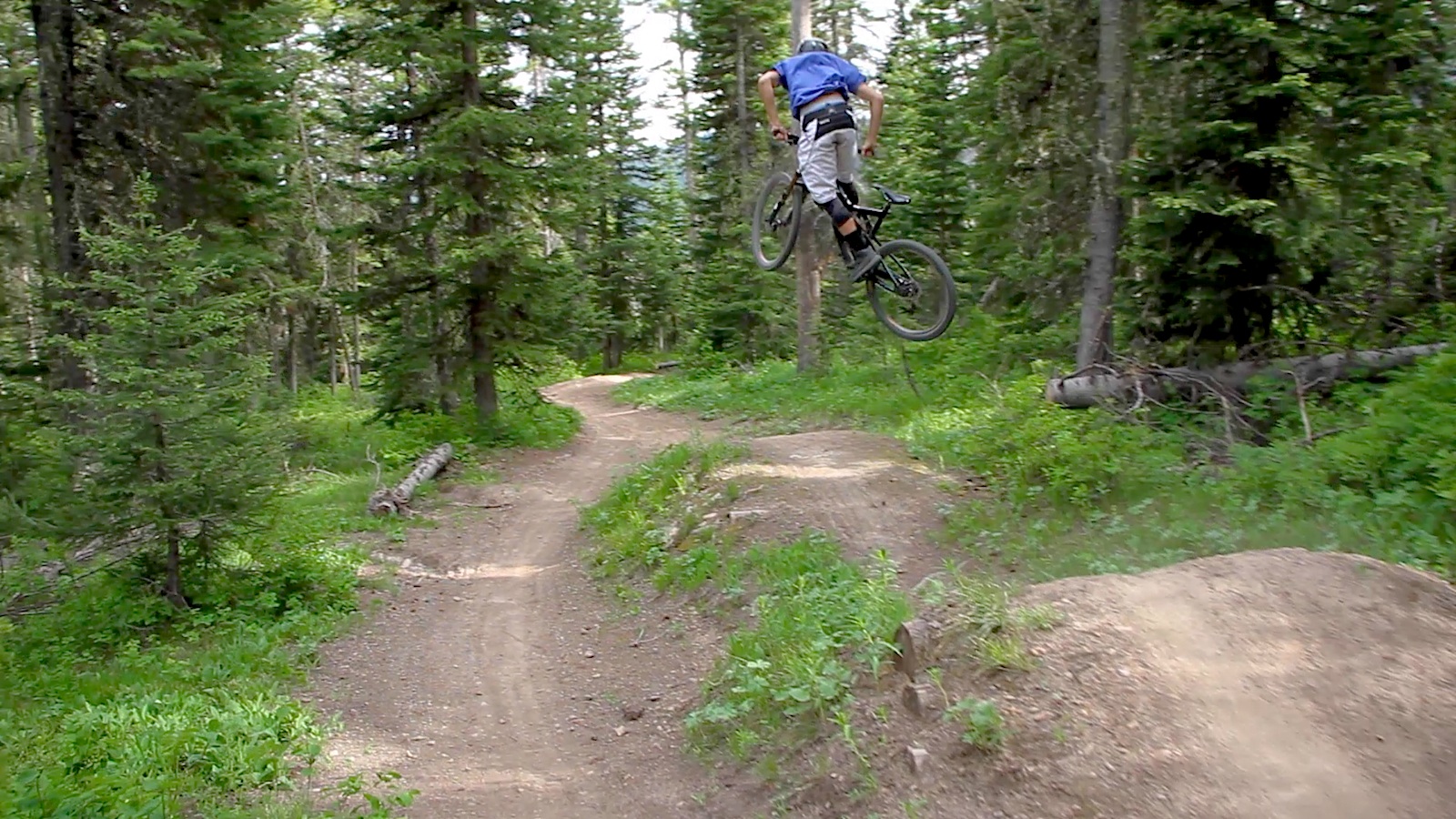 Feeling cozy in the air above Teton Pass' Jimmy's Mom trail. Photo by Micah Berman.
Feeling cozy in the air above Teton Pass' Jimmy's Mom trail. Photo by Micah Berman.
I was extremely impressed by how comfortable I was in the air with this bike. Rolling towards the tabletop boulder jib (the Step Mom) at the top of Jimmy's Mom on the Teton Pass trails here in Jackson Hole, I felt no hesitation in hitting it. Hell, I even felt comfortable enough gapping over the entire rock... a line I would only think about aboard my big bike. It even killed it on the peaky, dirt jump-style gaps.
The Bottom Line
.jpg.jpg) Yeti's renowned SB (Super Bike) line sits only a few hundred dollars about the 575's price point, and the new SB5C (above) shows how far Yeti's suspension designs have evolved past the 575's simple single-pivot.
Yeti's renowned SB (Super Bike) line sits only a few hundred dollars about the 575's price point, and the new SB5C (above) shows how far Yeti's suspension designs have evolved past the 575's simple single-pivot.
Since the 575 came out, Yeti has launched the SB 66, SB 75, SB 95, and just this week, the SB5C, all with the company's ingenious Switch Technology. The SB line has been absolutely raved about, and for good reason-they’re basically climbable trail bikes that descend like DH rigs. The rear suspension design has received tons of accolades, and its eccentric Switch Technology pivot design, which switches directions mid-way through the travel and makes for efficient pedaling as well as a butter-smooth feeling through chundery sections, has proved not to have any weird bugs.
The 575 will offer more of a trail bike feel for cross country riders looking for those trendy 27.5 wheels and full suspension, while still having many of the same capabilities of the SB's; just not the their renowned rear suspension performance.
The 575, on the other hand, is a legacy trail bike that has been updated to keep up with modern wheel trends. With the SB-75, a phenomenal trail bike with the same exact awesome components and 27.5 wheels for $300 more, just fork over the extra dough and go with the SB. After all, if you’ve already got $4600 in spare change to spend on a bicycle, you probably have another $300 to really make that investment sing on the trail.
 Mike cruisin' Phillips Ridge under the mighty Tetons on the 575. Photo by Ryan Dunfee.
Mike cruisin' Phillips Ridge under the mighty Tetons on the 575. Photo by Ryan Dunfee.
That being said, the 575 will offer more of a trail bike feel for cross country riders looking for those trendy 27.5 wheels and full suspension, while still having many of the same capabilities of the SB's; just not the their renowned rear suspension performance. The bike climbed well and descended well - a package that is hard to come by, as good descending traits usually compromise climbing abilities, and vice versa.
If you are fairly new to riding bikes, and aren't looking to become a Category 1 racer, then the 575 may be just right for you. It offers a comfy platform for newer riders while still being capable enough to allow tons of progression on a variety of terrain before you’d ever need a new bike.



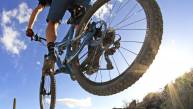
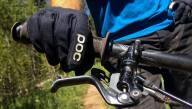

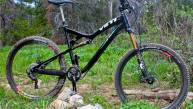

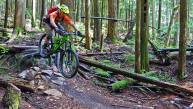


jane stone
November 2nd, 2019
Thanks for the very nice article here you can need to seen the windows shortcut in computer here and follow the all information.